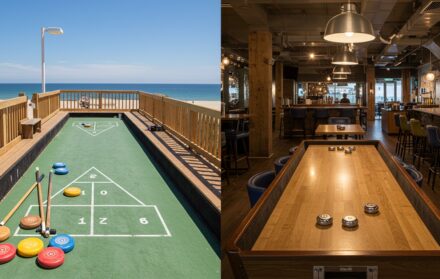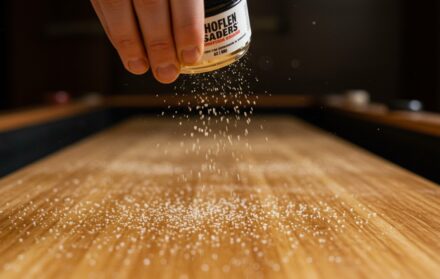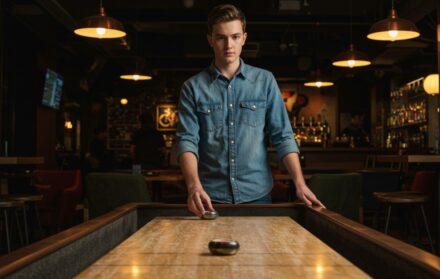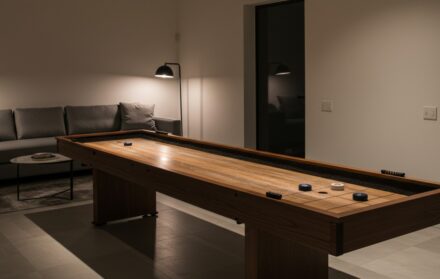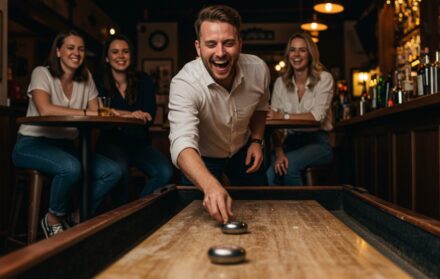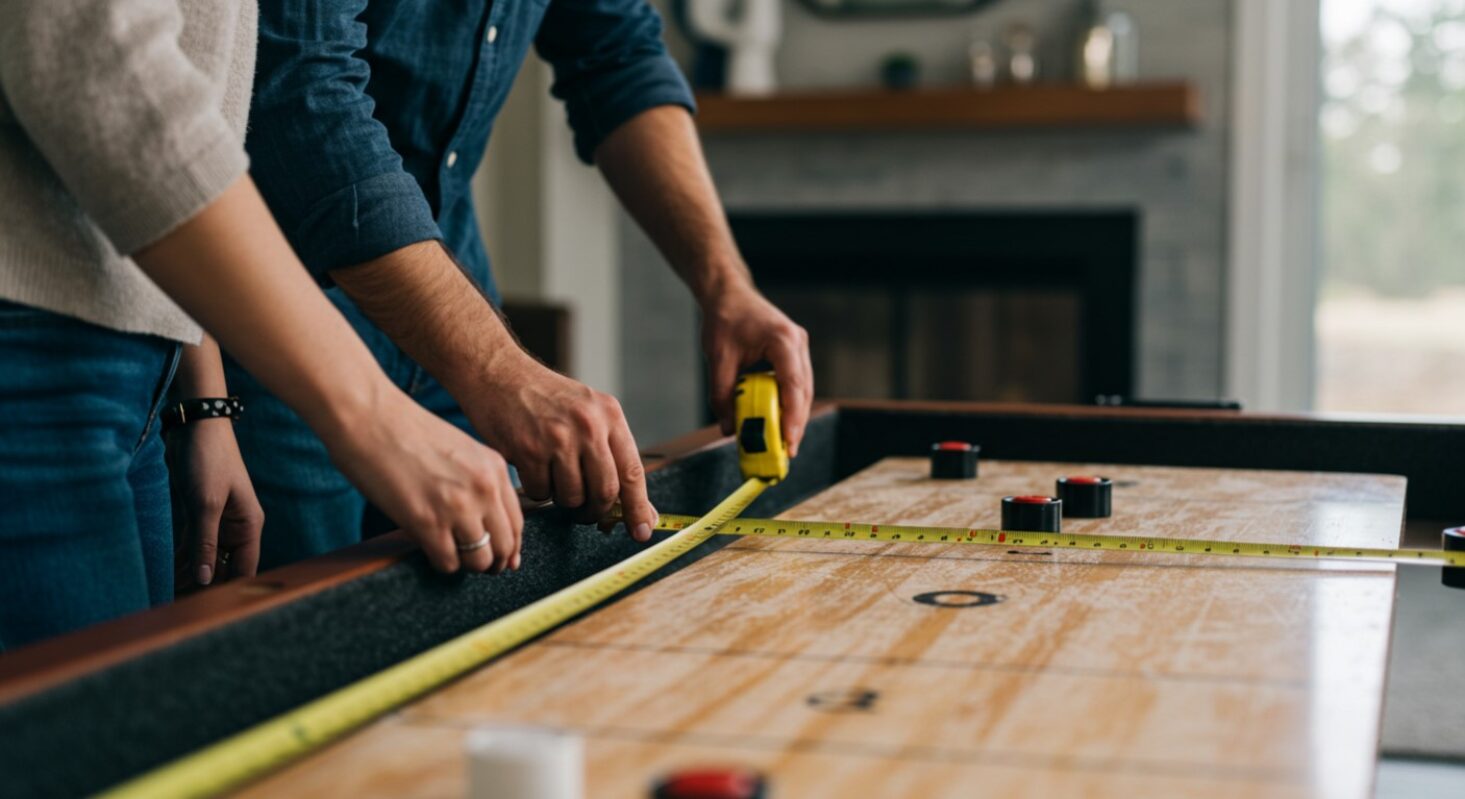
How Do You Choose the Right Shuffleboard Table Size?
Shuffleboard is a game that has always thrived on simplicity. Slide a puck or disc along a smooth surface, aim to reach the scoring zone, and try to outwit your opponent. Whether it’s played indoors on a table or outdoors as deck shuffleboard, the core appeal is the same: easy-to-learn rules paired with endlessly replayable strategy. Yet while the rules are straightforward, one of the most complicated decisions for anyone looking to buy a table is choosing the right shuffleboard table size.
Shuffleboard tables come in a surprising variety of lengths, ranging anywhere from 9 feet to the full professional standard of 22 feet. Each size offers a different playing experience, and each requires a different commitment in terms of space, budget, and maintenance. Choosing the wrong size can lead to a frustrating experience, whether it is a cramped games room at home, a pub with no room for customers to walk past, or a table that feels either too short or overwhelmingly long for the players who will actually use it.
The good news is that with careful thought you can match the right table size to your needs. This guide explores why size matters, what the standard options are, how space and audience affect your choice, and what practical mistakes to avoid. By the end, you should feel confident about selecting the shuffleboard table that truly fits your home, venue, or club.
Why Shuffleboard Table Size Matters
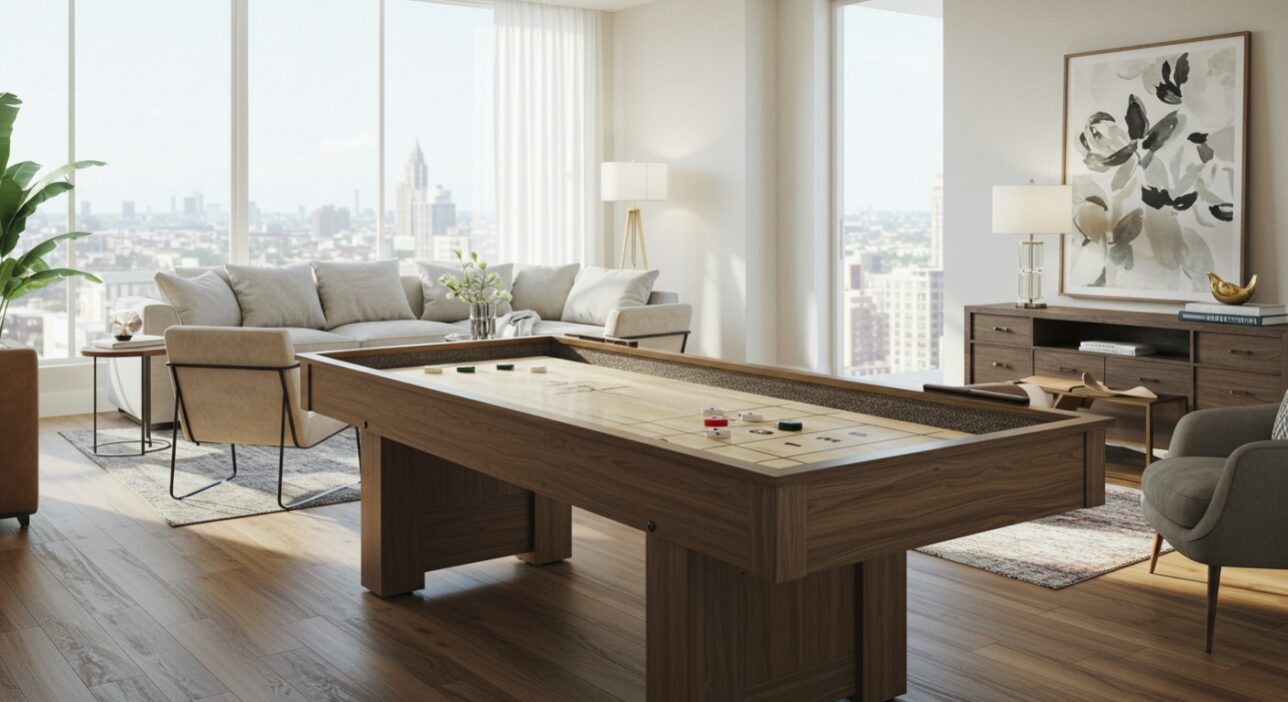
The size of your shuffleboard table will directly shape the way the game feels. Longer tables demand more precision and create a greater challenge. They reward patience, skill, and practice. Shorter tables, by contrast, are more forgiving, easier for beginners, and fit well in social environments where the aim is fun rather than competition.
There is also a cultural element at play. In pubs and bars, medium-length shuffleboard tables are popular because they balance the challenge of the game with the practical limitations of space. In dedicated clubs or tournament settings, nothing but the full 22-foot table will do, because that is the size used for professional play. At home, families often opt for smaller tables simply because they are easier to install and maintain.
Another consideration is atmosphere. A 9-foot table can feel like a casual pub game, similar to darts or foosball, while a 22-foot table commands the room and gives off the air of a serious sport. This is why size is not just a matter of measurement — it is about deciding what kind of shuffleboard experience you want.
Standard Shuffleboard Table Sizes Explained
Although shuffleboard tables can technically be made to any length, the market has settled on a set of standard sizes. Understanding these will help you narrow down your options.
9–12 Feet: Compact Tables
These are the smallest sizes available and are typically chosen for homes, smaller pubs, or casual players. They are easy to install and move, and they take up significantly less space than their larger counterparts. The shorter surface makes games quicker and more accessible, especially for children or beginners.
14–16 Feet: Medium Tables
This is the most popular range for pubs and social clubs. Medium tables retain enough length to create a sense of challenge while still being manageable in terms of space. For casual play in a busy venue, this size is the sweet spot.
18–20 Feet: Large, Semi-Professional Tables
These tables are for serious players or dedicated games rooms. They provide a near-tournament experience while still being slightly less demanding than the full 22-foot model. Many enthusiasts choose these sizes when they want to improve their skill without going all the way to professional length.
22 Feet: Tournament Standard
The official length used in professional shuffleboard competitions. At this size, every tiny adjustment in push strength or angle matters. The challenge is greatest, and the playing experience is the most authentic. However, these tables require a dedicated space, often a large hall or club, and they represent a significant investment.
Width and Height
Regardless of length, most shuffleboard tables are around 20 inches wide, though some larger ones can be up to 30 inches. The height is usually 30–32 inches. While width and height rarely vary, length is the key factor that alters gameplay.
Space Requirements for Shuffleboard Tables
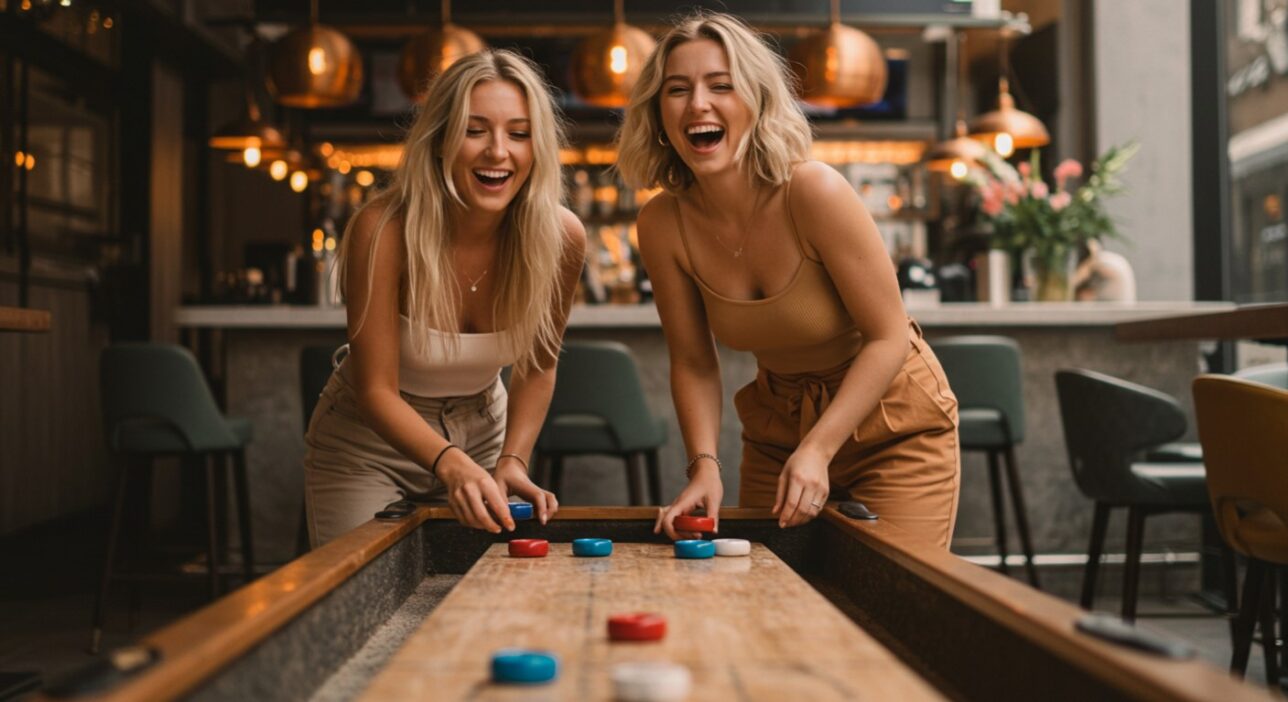
It is not enough to measure the length of the table itself. To enjoy shuffleboard properly, you also need to account for space around it.
The golden rule is to leave at least 2 feet of clearance at both ends of the table so that players can shoot comfortably. For a 22-foot table, this means you need a minimum room length of 26 feet. For a 12-foot table, you would need at least 16 feet of space.
Side clearance is less demanding but still important. Allow at least 2 feet on each side, especially in pubs where customers will need to pass by. If you plan to use the table in a home games room, consider whether you want chairs, scoreboards, or other furniture nearby, and measure accordingly.
Lighting and ceiling height also play a role. Shuffleboard tables benefit from overhead lights that clearly illuminate the scoring zones. Rooms with low ceilings may make tall lighting rigs impractical, so shorter tables may be more appropriate in such settings.
Who Will Be Using the Table?
The right shuffleboard table size is not just about space — it is about the players themselves.
-
Beginners and families: Shorter tables are more forgiving and less intimidating. Children, in particular, will enjoy compact tables because the pucks do not require as much force to reach the scoring zones.
-
Casual pub players: Medium tables strike a balance, providing enough challenge for adults without overwhelming new players.
-
Serious or competitive players: If the goal is practice for tournaments or leagues, only the 22-foot table will replicate the experience. Anything shorter will feel like a compromise.
-
Mixed audiences: Venues that expect a variety of players — from newcomers to seasoned enthusiasts — may prefer mid-sized tables, which provide flexibility.
Matching the table size to the intended audience is crucial. A family might find a 22-foot table gathering dust because it feels too difficult, while a competitive club would quickly outgrow a 9-foot model.
Shuffleboard Table Size vs. Playing Experience
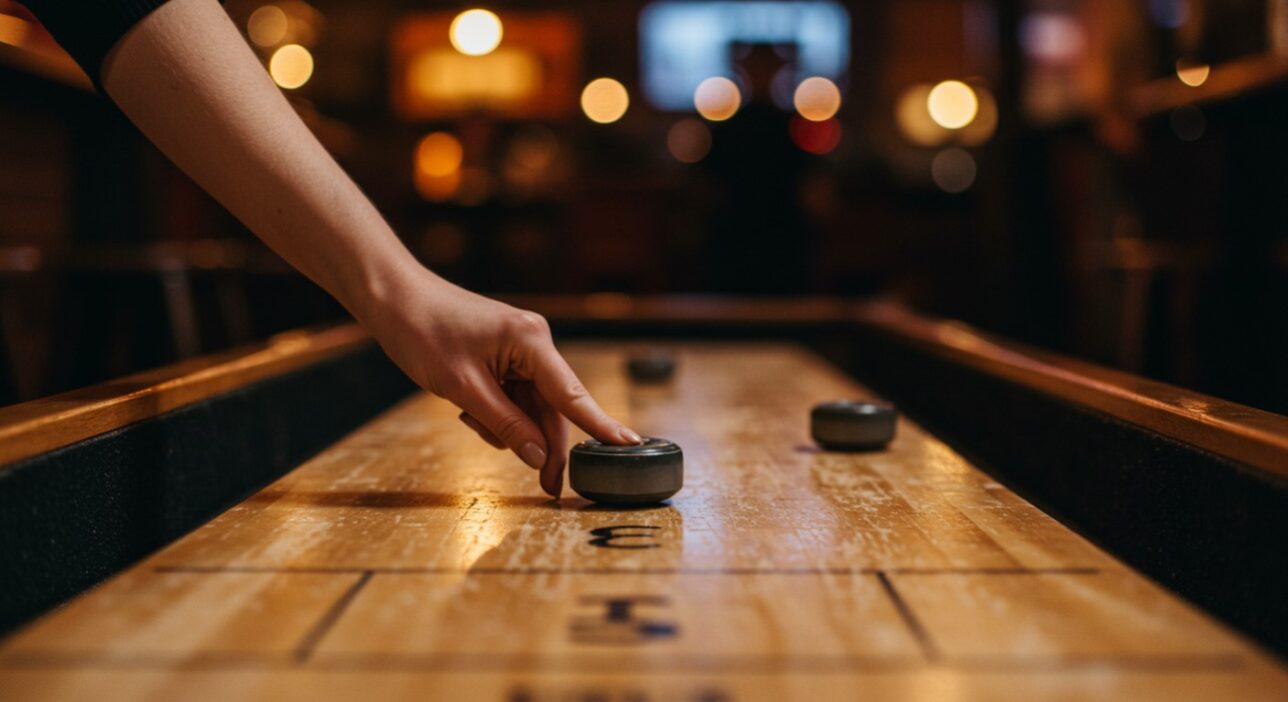
Size influences more than just difficulty; it changes the rhythm and style of the game.
On longer tables, pucks travel further and require finer control. The waxed surface means that even the smallest push can send a puck sliding far down the board. Longer tables encourage tactical blocking, precise placement, and defensive play.
Shorter tables, on the other hand, often produce faster games with higher-scoring rounds. Players can reach the scoring zones with less effort, and the knock-off element becomes more prominent. These games can feel more energetic and light-hearted, which is why shorter tables are so popular in pubs.
The choice of wax also interacts with table size. On a 9-foot table, fast wax may cause pucks to fly off the end too easily, so medium or slow wax is recommended. On a 22-foot table, fast wax is necessary to ensure pucks reach the far end smoothly.
Budget Considerations Linked to Size
Larger shuffleboard tables cost more, both upfront and over time.
-
Initial cost: Compact tables are the most affordable, while tournament models can cost several times more.
-
Delivery and installation: Long tables are heavy and often require specialist movers to install. Narrow hallways, staircases, or tight corners can add to the cost.
-
Maintenance: Bigger tables need more wax, more frequent brushing, and more careful levelling.
-
Accessories: Larger tables may require additional lighting, larger covers, and sturdier climate adjusters.
For UK buyers, compact tables can start in the low hundreds of pounds, while full-size tournament tables often run into several thousands, especially for high-quality hardwood models.
Practical Factors Beyond Size
Several other practical issues come into play when choosing the right shuffleboard table size.
-
Weight: Long tables can weigh several hundred kilograms. This makes them difficult to move once installed.
-
Room access: Before ordering, check whether the table can physically fit through your doors, staircases, or hallways. Many long tables are delivered in sections, but installation is still complex.
-
Climate adjusters: These are metal rods fitted underneath the table to counteract wood warping. They are essential on long tables to keep the surface level.
-
Covers: Regardless of size, a shuffleboard table should be covered when not in use to prevent dust, spills, or scratches.
These practical considerations often tip the balance between choosing a mid-sized or large table.
Choosing the Right Shuffleboard Table Size for Different Settings
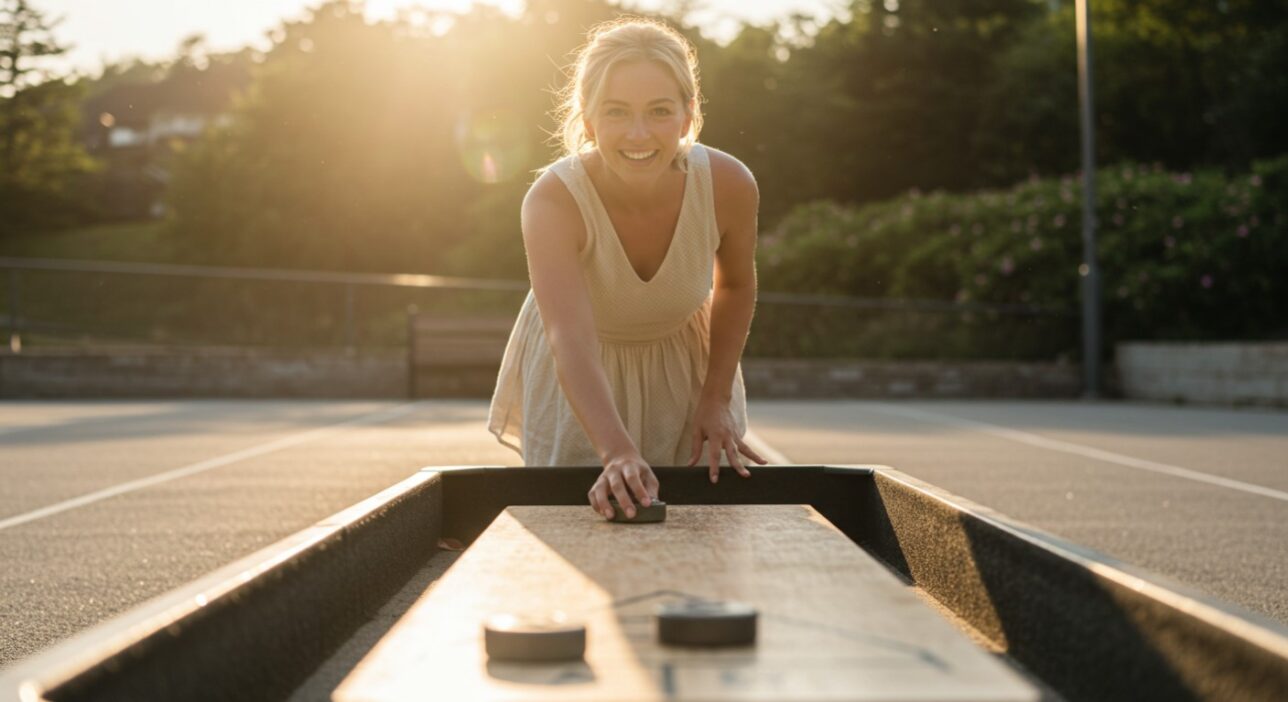
Homes
For most homes, compact or medium tables make the most sense. A 9- to 12-foot table is ideal for flats or smaller houses, while 14- to 16-foot models suit larger game rooms. Families with children may prefer shorter lengths, while enthusiasts with space and budget might invest in an 18- or 20-foot table.
Pubs and Social Venues
Pubs need to balance gameplay with space for customers. Medium tables in the 14–16 foot range are often the sweet spot, offering enough challenge to entertain regulars while still fitting into tight spaces. Venues that host events or leagues may opt for larger tables, but only if space allows.
Competitive Clubs
For clubs, leagues, and serious players, the 22-foot tournament table is the only true option. Anything shorter will not replicate the conditions of competitive play. Clubs often invest in multiple full-length tables to host matches and tournaments.
Mistakes to Avoid When Choosing Table Size
-
Overestimating space: Buyers often measure the table itself but forget about the clearance needed for players at each end.
-
Underestimating access: A table that fits your room may not fit through the door. Always check delivery logistics.
-
Choosing by price alone: The cheapest table may not meet your needs, and the most expensive may be unnecessary if the table will be used casually.
-
Ignoring future use: Families may need a longer table as children grow, and pubs may attract more players if shuffleboard becomes popular.
Conclusion: Choosing the Right Shuffleboard Table Size for You
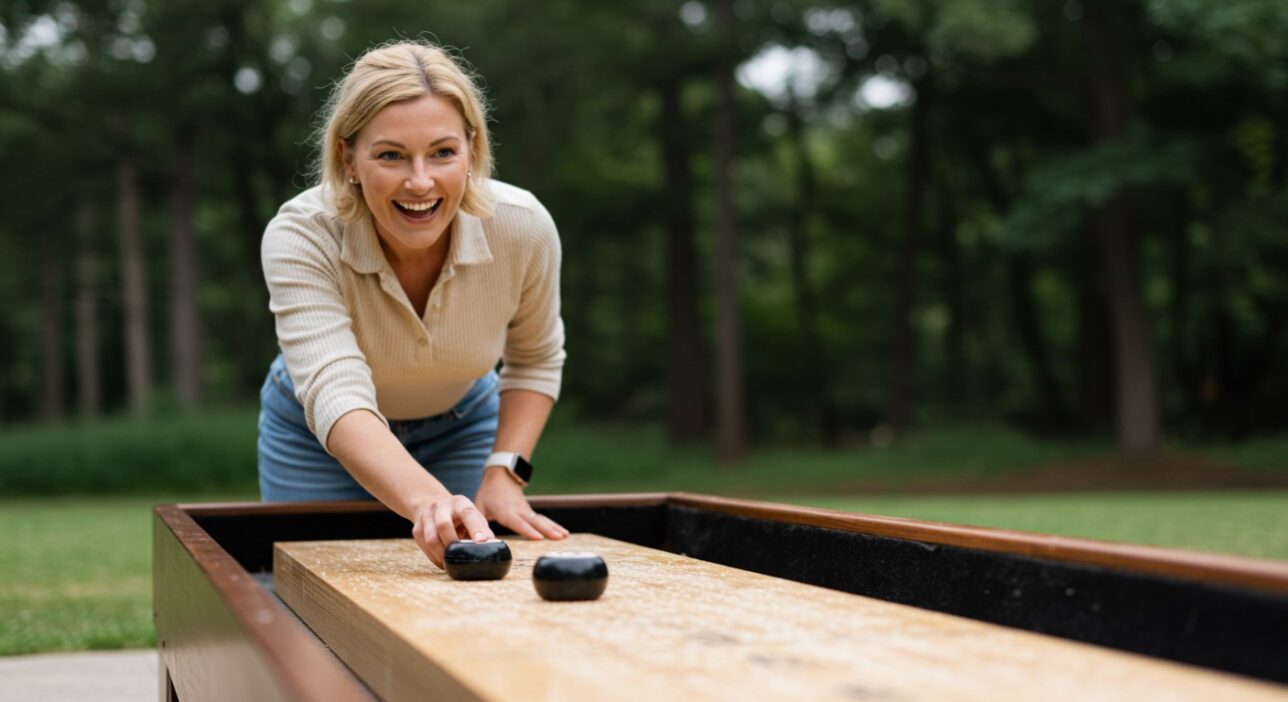
The question of how to choose the right shuffleboard table size does not have a single answer. Instead, it depends on a careful balance of space, audience, budget, and long-term goals.
If you are a beginner or a family, a compact table in the 9- to 12-foot range may be the perfect fit. For pubs and social clubs, medium tables around 14–16 feet balance practicality with entertainment value. For serious players or competitive clubs, nothing short of the full 22-foot tournament table will suffice.
The most important step is to measure your space carefully and consider who will actually use the table. By doing so, you can ensure that your shuffleboard table will not only fit physically but also fit the style of play and atmosphere you want to create. With the right size, shuffleboard becomes what it has always been — a game of skill, strategy, and shared enjoyment.
